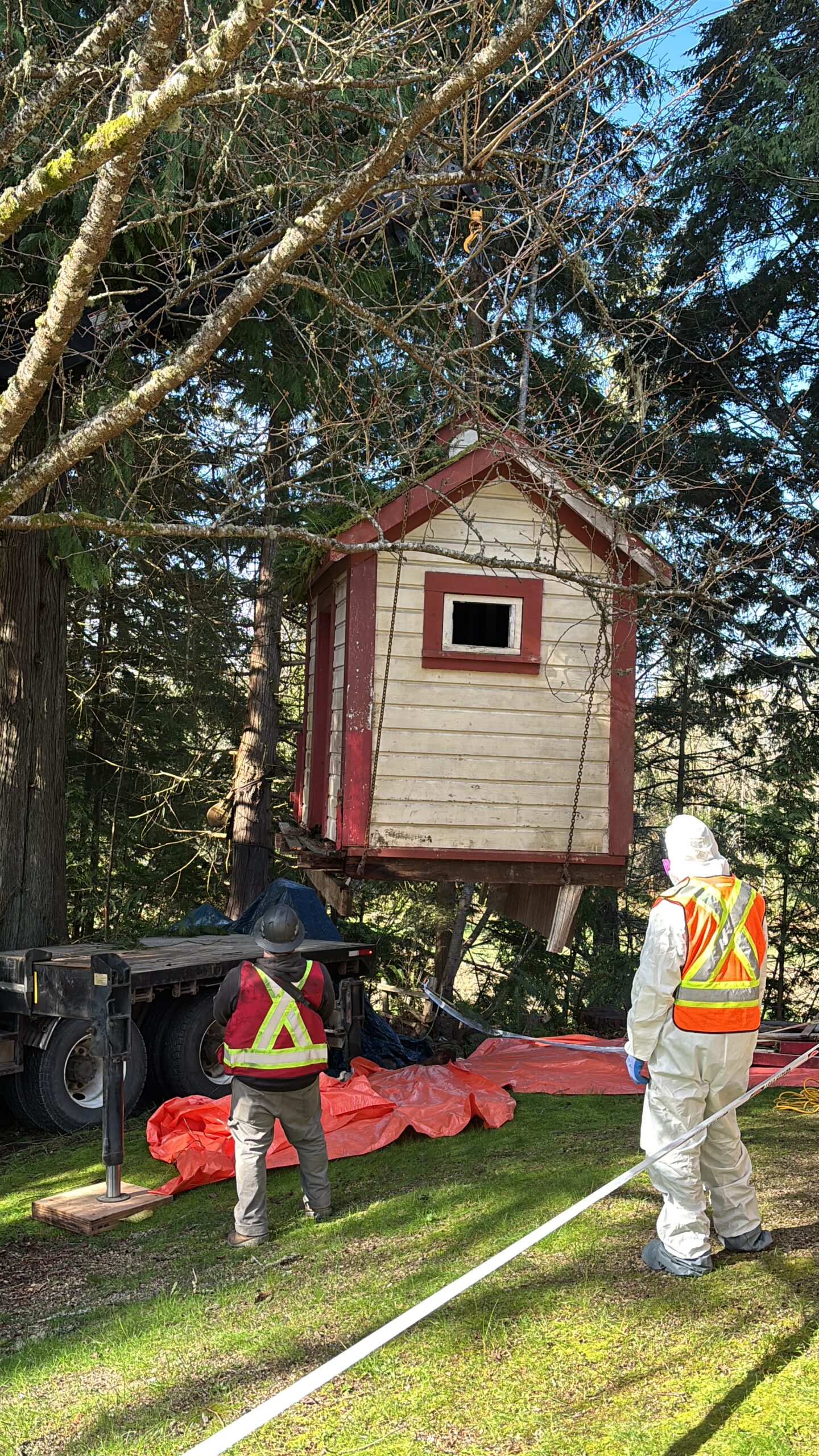
Back in March, the Museum said goodbye to an artifact, the “four-holer” Outhouse. The Outhouse was severely compromised from its high concentration of toxic lead paint. We are sad to see it go, but to protect the collection, staff, visitors, volunteers, and the saltwater marsh below, the Outhouse was removed.
The “four-holer” Outhouse came from the property of the old Otter Point School (1913-1952). There were two outhouses at the school, one for girls and one for boys. The Museum acquired the Outhouse in 1983, where it was a highlight of the open house that year. Norm Peterson presented Museum Historian Elida Peers a “key” to the Outhouse. The structure was disassembled and then rebuilt on the property. Inside, there were four “holes” with dividers between each seat. On an interior wall is etched, “Guess who loves teacher?”
Lead paint was popular from its density and opacity, a small amount could cover a large surface. At the turn of the 20th century, Sherwin-Williams reported the dangers of lead paint, explaining it was “poisonous in a large degree.” Throughout the 20th century, countries started placing regulations on using lead paint. Lead paint is most dangerous when there is flaking of the paint and it becomes airborne, which can enter your system. Stunted growth, kidney damage, delayed development, and nervous system damage are all symptoms of ingesting lead. In Canada, regulations on interior paint containing lead were introduced in 1976. Whereas there were no restrictions on exterior paint containing lead. Paints manufactured before 1950 contained as much as 50% of lead by weight. The Hazardous Products Act limited lead content of paint and other liquid coatings to 0.5% of lead by weight. Many buildings prior to 1976 contained lead and it was not until later where testing became more accessible.
Before removing the Outhouse, multiple tests were performed. First, we swabbed the paint, confirming the presence of lead. Then, an environmental testing company took samples to see how much lead was contained in the paint. The results showed the Outhouse contained a lead concentration four times the amount that was acceptable. With that, our only recourse was to remove the Outhouse from the property for it to be disposed of properly. On March 31st a lead remediation company disassembled and removed the Outhouse, with the assistance of a crane. This was necessary to protect the surrounding environment, collection, and people that come to the Museum’s property.
Although the Outhouse is physically gone, we still have records and photos documenting the history of this structure. It is important for Museums to ensure safety measures are followed, and unfortunately, it sometimes means artifacts are disposed. The Outhouse will live on in memory… and there may be a replica down the road.

